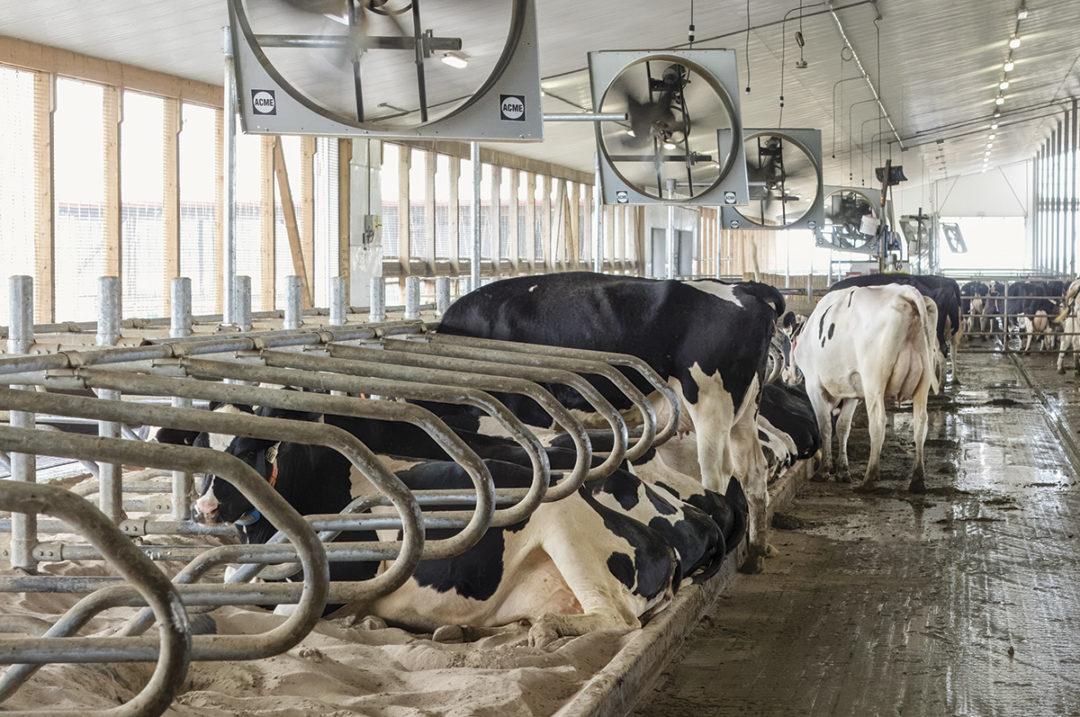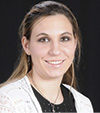A Professional Dairy Producers The Dairy Signal webinar from January 2024, “Reviewing Solids vs. Sand Beddings,” explored various types of bedding and their impact on cow comfort. Drs. Nick Mayer and Monty Belmer of Waupun Vet Clinic offered some recommendations and perspectives on bedding choices in light of recent research and practical on-farm observations.
“No one bedding is a be-all… what one farm can make work really well another can struggle with,” Mayer said. “Bedding type is a major decision on a dairy, so if it’s something you haven’t really put a lot of thought into … it’s probably time for you to do some work there.”
Not only is bedding an element of comfort, it is also tied directly to a farm’s hygiene and somatic cell count. Determining the best type for a particular dairy balances this with what is effective for daily management to improve work efficiency, profitability and longevity.
The purpose of bedding
Bedding serves four major purposes. Mayer and Belmer said these are to:
- Provide a cushion. Being on concrete constantly can take its toll on a cow and offering a cushion while resting reduces bodily wear and tear. Keeping her comfortable not only reduces stress on the body, but it also can reduce lameness and enhance overall longevity.
- Increase lying time. Rumination and lying down have a direct relationship with one another. The more we encourage a cow to lie, the more rumination, which can improve increased production and profitability.
- Keep animals dry. Dryness is important for keeping bacterial growth to a minimum. Higher moisture content in bedding allows bacteria to grow, which could lead to infections such as mastitis.
- Be an environmental contamination barrier. Avoiding growth of bacteria and other pathogens is crucial for preserving health. For most farms, sand can be a way to reduce and discourage pathogenic growth.
Evaluating bedding types
The two categories of bedding types are organic and inorganic. Organic bedding is basically matter that at one point was alive such as straw, sawdust, wood shavings, manure solids. Inorganic bedding is usually some form of geological component like sand or limestone.
Pillows, rubber mattresses and waterbeds are examples of inorganic bedding but should be applied with an ample top layer of some other more enticing bedding to encourage lying time.
Although these three were designed for dairy barns, they tend to be harder than inorganic or organic bedding, which can increase hock lesions and similar issues.
Sand bedding
Mayer said sand can be considered to be the “gold standard” when it comes to bedding comparisons.
“It’s not the one and only be-all option by any means, but it’s something we always have to consider when we compare bedding type to bedding type,” he noted.
The biggest pro of sand is its low bacterial counts due to being organic – however, it can become mixed with organic materials that, if not properly managed, can increase bacterial counts. It also improves traction, hoof health and cost due to recyclability. However, it is rough on equipment, can become impacted inside stalls, and there is a wide range of variability in quality depending on sand type.
Good-quality sand can aid in distributing the weight of the cow in the stall, and to do this effectively it has to be 4 to 5 inches deep, and that can be with a mat underneath. Sprinkling sand on top of a mat is simply not enough.
Recycling sand is an attractive cost-saver to many dairies, but the practicality of doing so will vary. Belmer highlighted the fact that sand recycling with traditional reclamation lanes takes a lot of water. Because there is still organic matter that can be present, it must sit for a substantial time (six to nine months) before it can be used again.
Some utilize sand fracking with a machine that takes the fine-grained sand for reclamation.
A drum composter can create a clean appearance, yet its composition may alter within a 24-hour period. The retention time in drum composters depends on the volume of manure undergoing processing. Optimal results need longer retention times to ensure stability in dry matter content without significant fluctuations.
Greater dryness and extended processing time both help reduce the bacterial population exposed to animals. Dryers, which use high heat and consume substantial energy, do a great job lowering moisture content to a range of 40% to 45%.
One important detail about sand that Belmer and Mayer stressed was the amount of organic material present in sand before it's even placed in stalls. For example, pit sand that contains a lot of clay will often have higher bacterial cultures. The same can be said of sand pulled from separator machines if they haven’t been fully processed.
Organic materials
Because organic bedding was alive at one point, the cellular materials that remain create an ideal environment for bacterial growth under the right conditions: moisture, humidity, temperature, etc.
Straw is an especially great medium for growing bacteria once exposed to manure. Sawdust and wood shavings are similar to straw in the fact that they can house bacteria.
Bedding like straw, sawdust and wood shavings also absorb manure and other “contaminants,” whereas sand it does not absorb organic matter.
Prioritizing cow comfort emerges as a paramount factor in maintaining the health and productivity of our livestock. Implementing appropriate bedding practices, particularly the use of sand, not only enhances overall herd longevity but also fosters a conducive environment for sustained milk production.
A strong recommendation by both Belmer and Mayer is for producers to run cultures on their bedding, whether organic or inorganic, to measure presence of various bacteria. There are some threshold targets, but what is a “normal” range will vary from operation to operation depending on humidity and other environmental factors.
“When it comes to bedding cultures, we ideally want to identify bottlenecks, track changes or progress … and (see) how do we ultimately create the best bed for that cow and put the best stuff underneath her,” Mayer said.






